Originally we wanted to drive across the Seto Ohashi Bridge (瀬戸大橋) from Okayama (岡山) to the island of Shikoku (四国) but we wanted to see the scenery of the Inland Sea from the bridge and since the weather was not cooperating with us on the day we wanted to go (it was cloudy), we choose to instead drive to neighbouring Yamaguchi Prefecture (山口県) from where we lived in Higashi-Hiroshima (東広島) in Hiroshima Prefecture (広島県).
It was hard to find tourist attractions worth visiting in Yamaguchi Prefecture, but after looking at some travel magazines at the local Tsutaya, a book and video rental store, we decided to visit Hagi city (萩) and then Yamaguchi city (山口市).
Yamaguchi city, the capital of Yamaguchi Prefecture, also known as "Kyoto of the West" in the tourism propaganda.
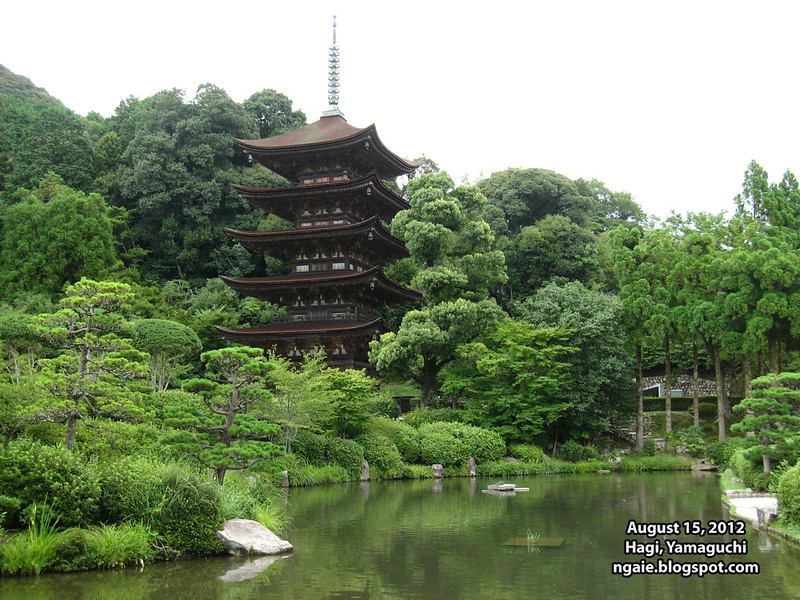
It took about 3 hours and 30 minutes to reach Hagi on the Sea of Japan side of Japan from Higashi-Hiroshima via the expressways and since all expressways in Japan are tolled, the one way toll cost about 4100 yen (US$41.00). You don't realize how mountainous a country Japan is until you drive through Yamaguchi Prefecture!
View 2012-08-15 Yamaguchi Prefecture in a larger map
One of the reasons why we choose to visit Hagi was because it was a well preserved former castle town and its Hagiyaki Pottery (萩焼) is one of the most famous pottery types in Japan.
When we arrived in Hagi, it was a pleasant surprise to find a lot of free parking at the suburban style stores built in the centre of the city. However, the presence of suburban style stores in the centre of the city kind of sucked the life out of the city. Another surprising thing we noticed was the absence of young people and the abundance of old people. You really have to travel to rural areas to see how much Japan is aging.
Even though we arrived by car, we had to go to the nearest railway station to find a tourist kiosk to find tourist brochures and information.
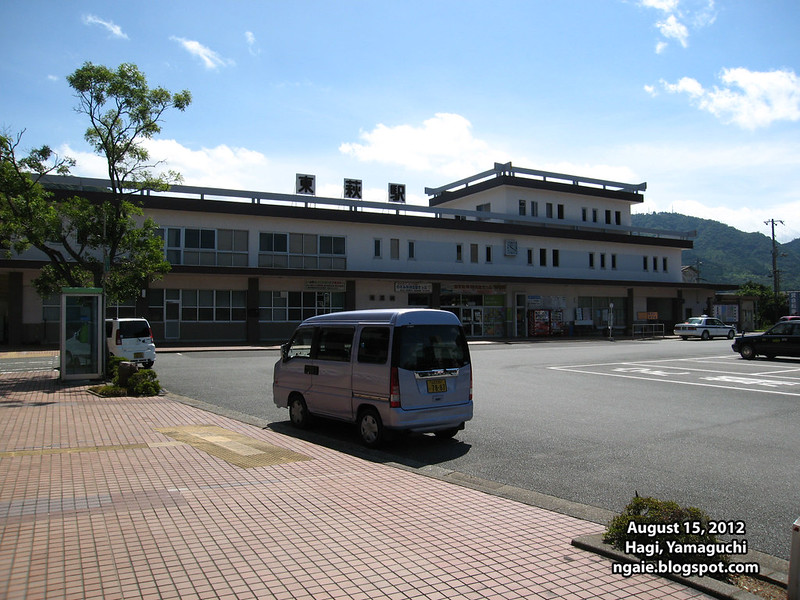
Model of Hagi Castle that is now long gone near the station.
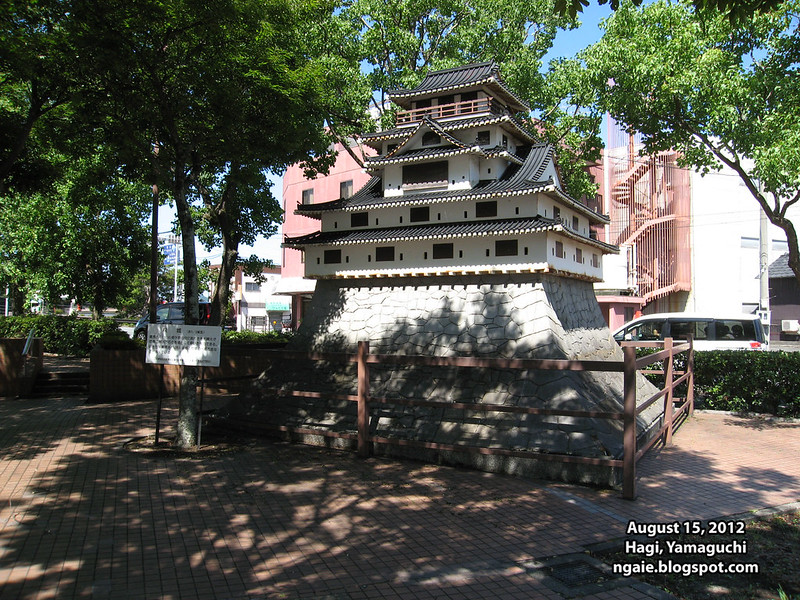
The central area of Hagi, we couldn't help but notice how dead it was. In fact there was not even a single convenience store anywhere and this is a country where convenience stores are everywhere.
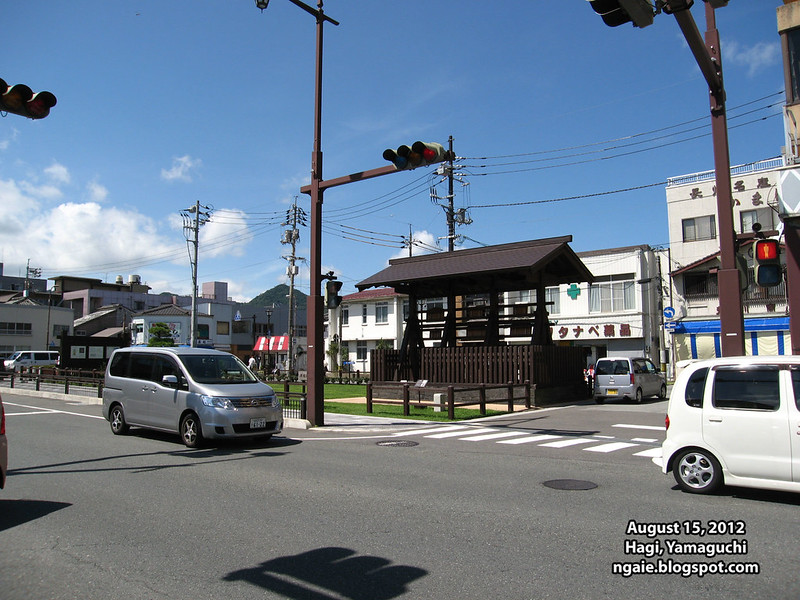
The preserved former samurai district.
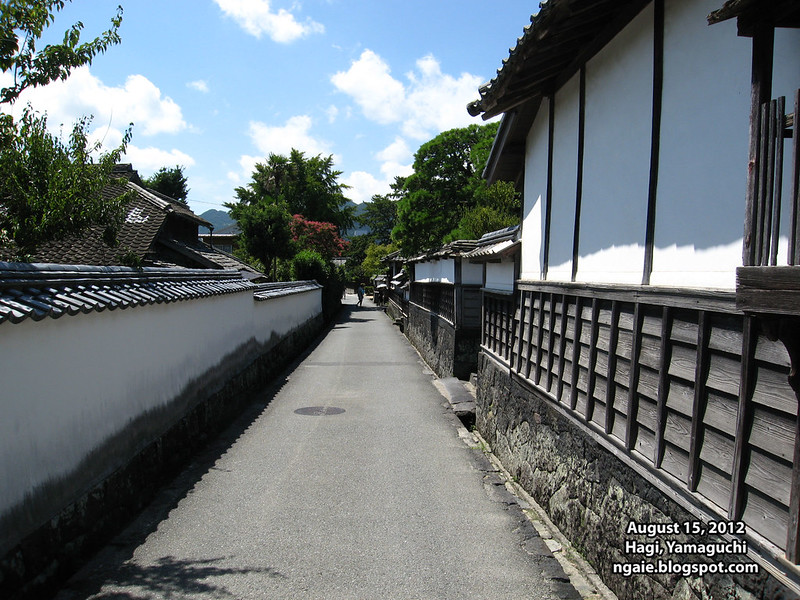


In this area, there were a lot of preserved residences of leading figures involved in the Meiji Restoration. Because we were not so familiar with modern Japanese history, it wasn't really interesting to us.
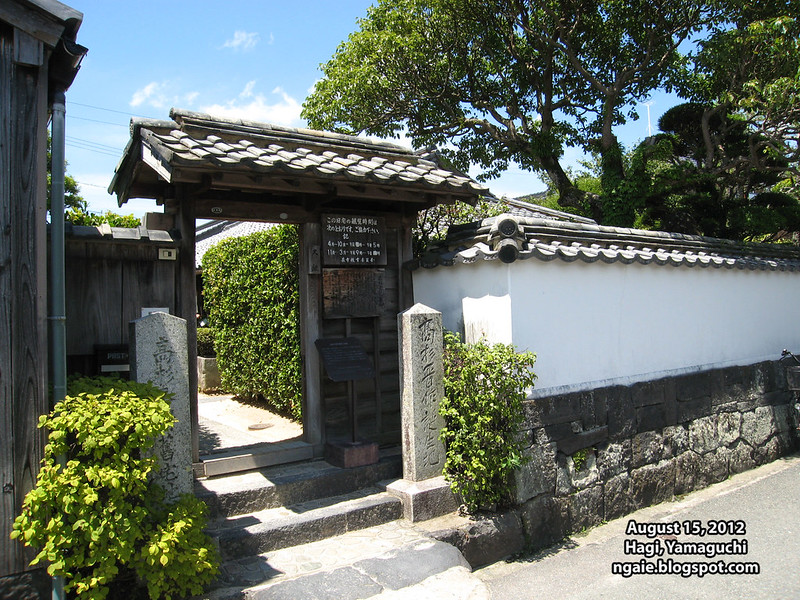
The Kido Takayoshi residence, one of the influential statesmen of the Meiji Restoration.
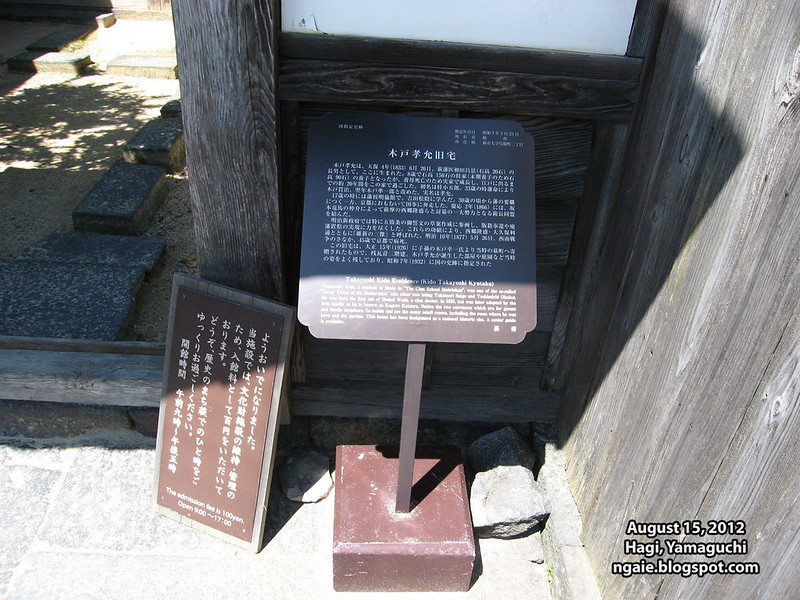
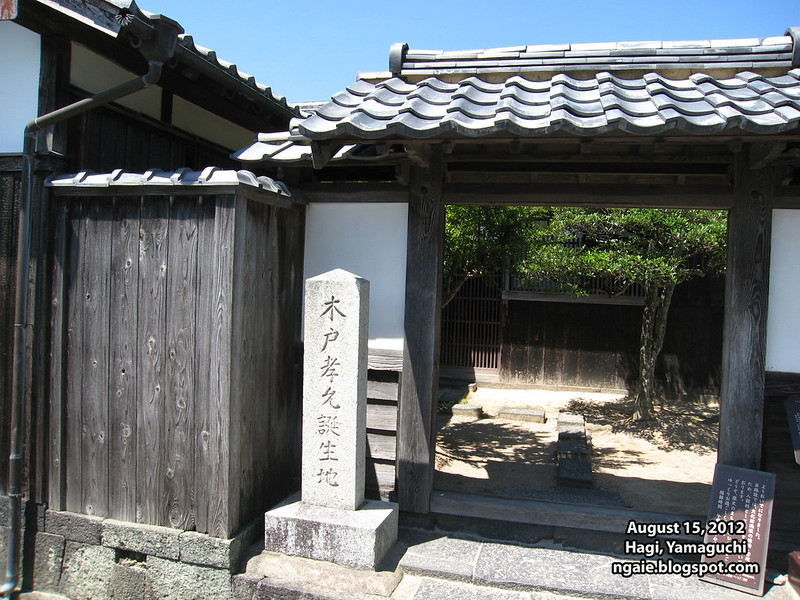
Statues of the leading figures of the Meiji Restoration in a park near the preserved area.
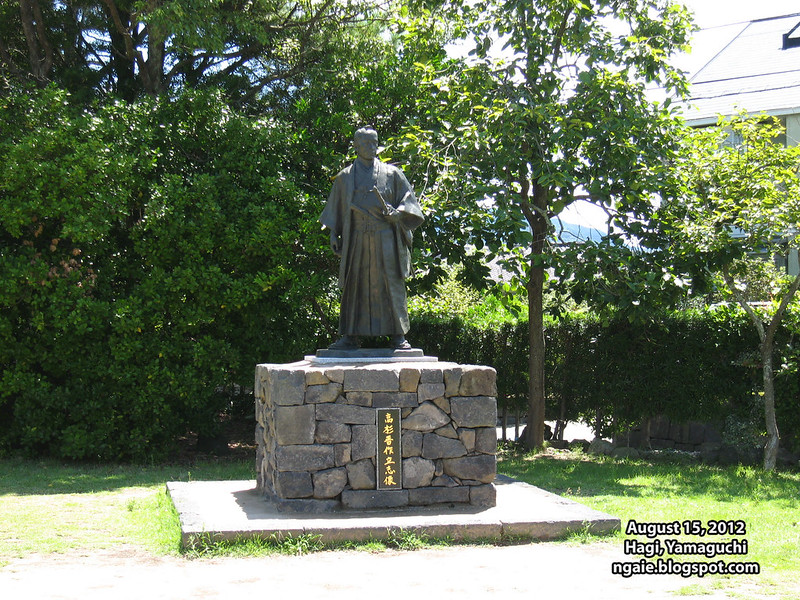
An interesting "art" display, no idea what is was though.
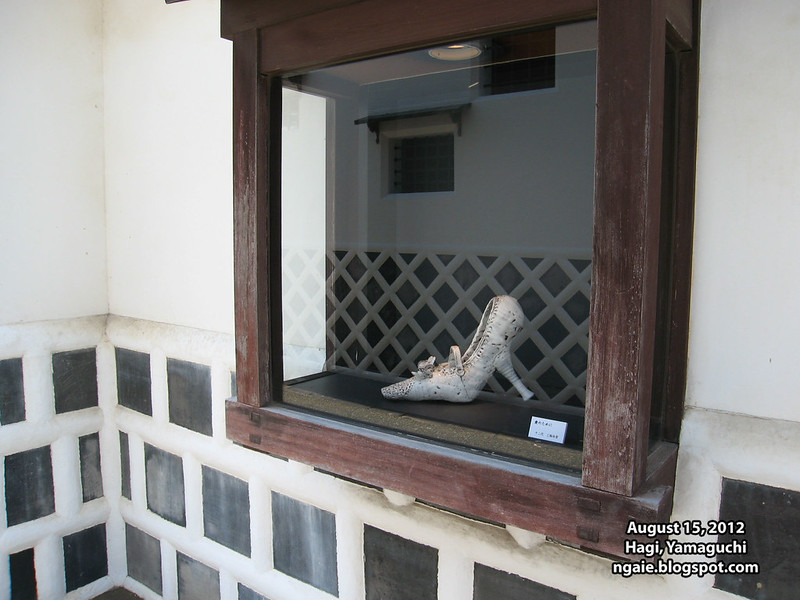
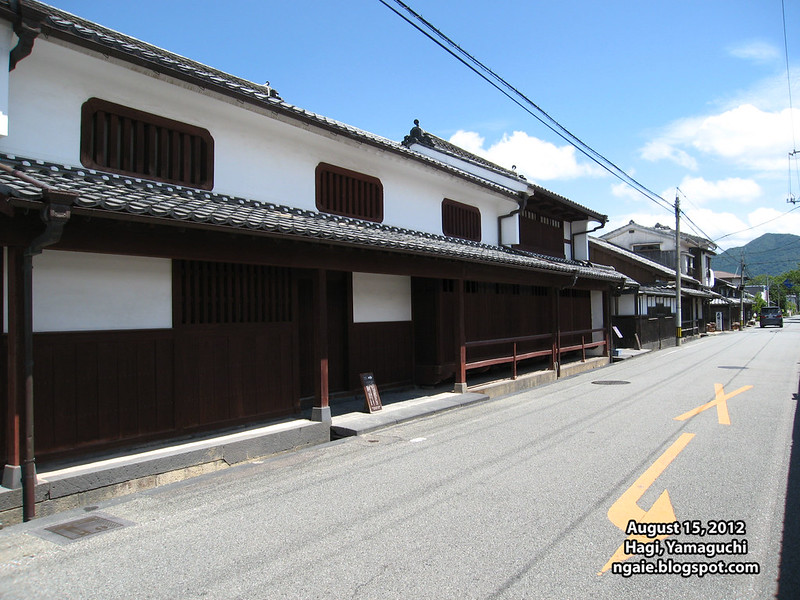
Next we headed to the ruins of Hagi Castle. The weather was perfect but it was really really hot that day!
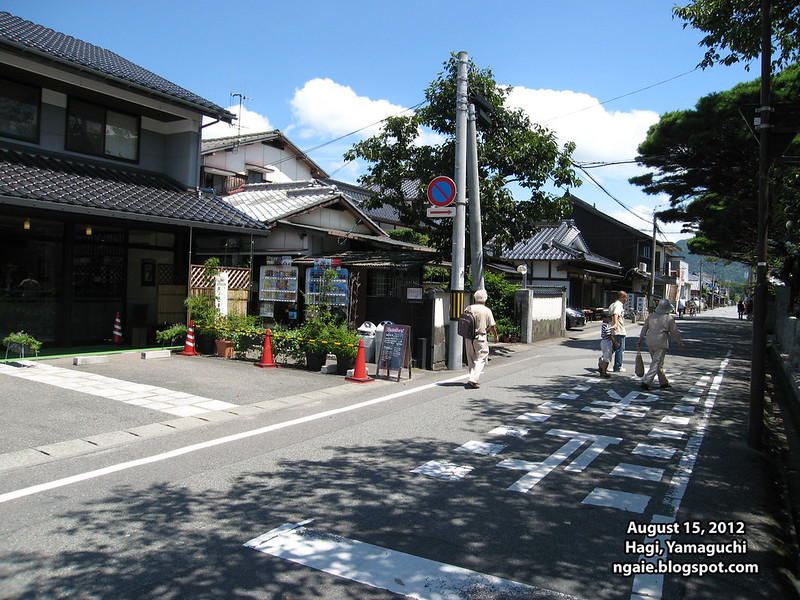
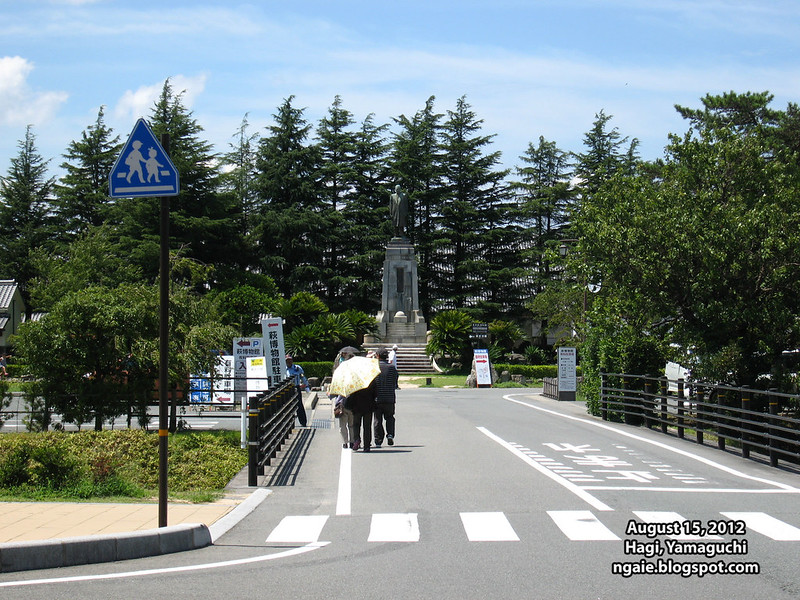
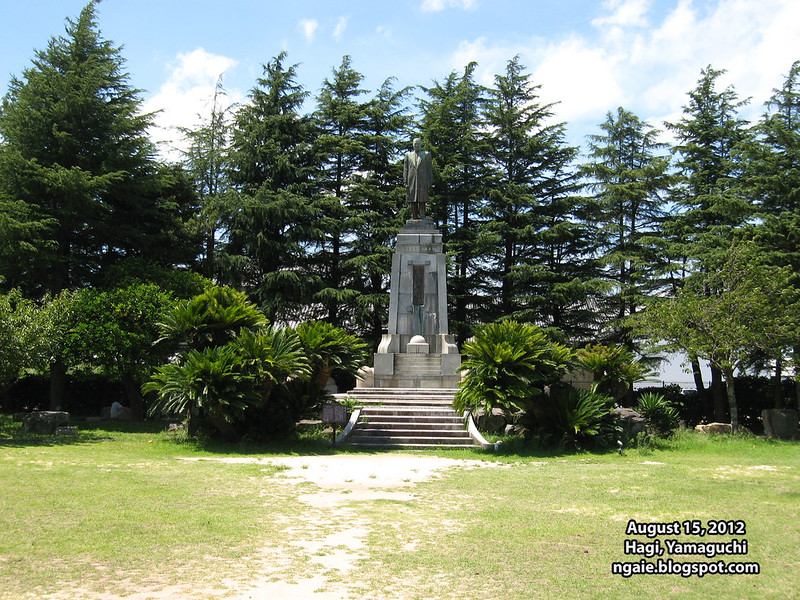
I guess this was the former moat.

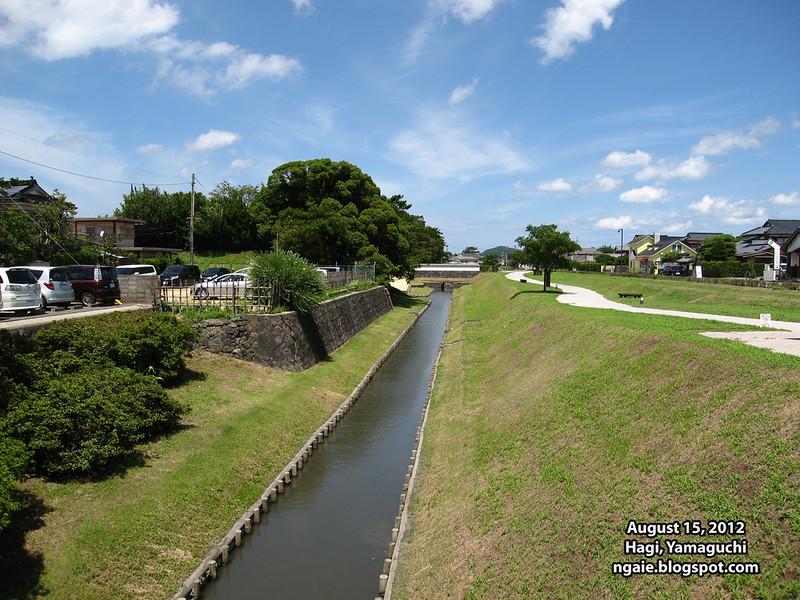
Parking lots and tourist facilities for the domestic group tours.

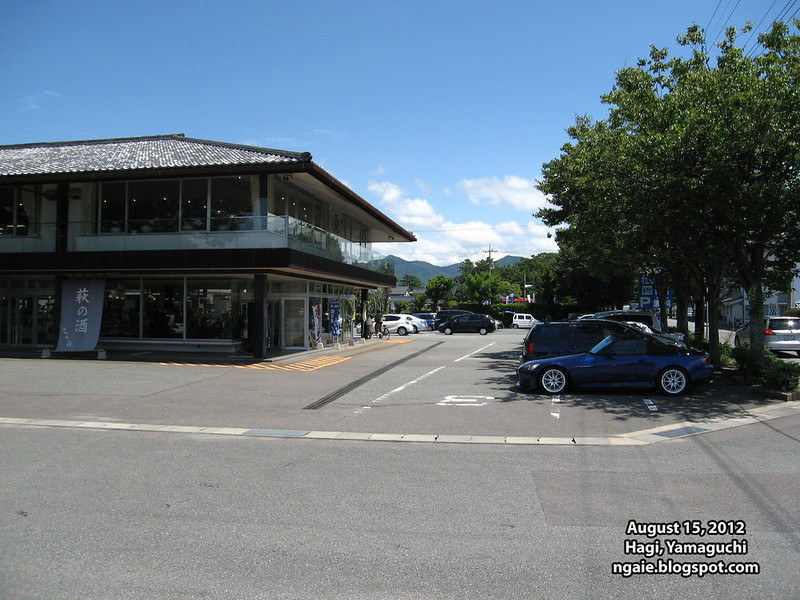
"Ruins of Hagi Castle". We didn't bother walking around the grounds because it was so hot and also because there was nothing much to see.


Near the castle ruins, there were many workshops that made the Hagiyaki Pottery.


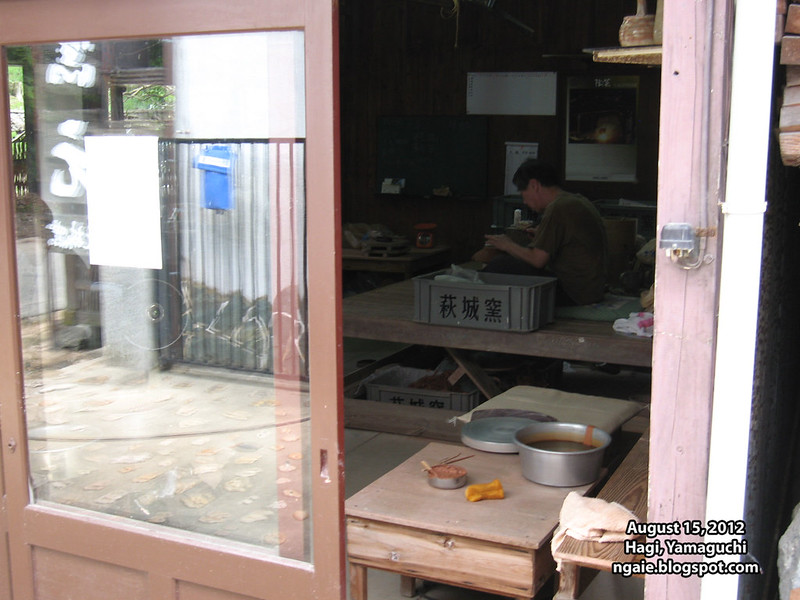
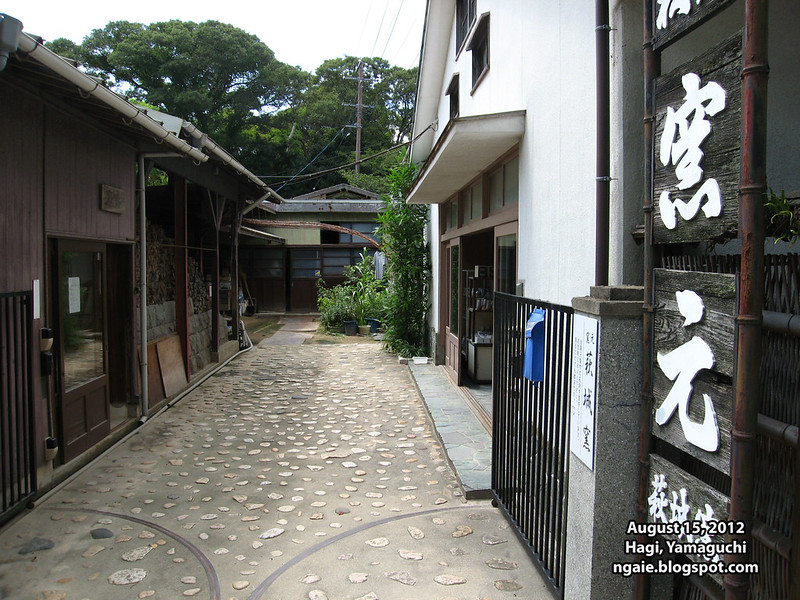
Afterwards, at mid-afternoon, we drove back south 1 hour to Yamaguchi city, the capital of Yamaguchi prefecture. In the tourist literature, it is called the "Kyoto of the West", but I don't think that description is accurate because although there are many historical buildings there, the city atmosphere did not feel like a traditional Japanese city.
The main attraction for Yamaguchi city is the Ruriko-ji Temple (瑠璃光寺) and surprisingly there was no entrance admission fee, unlike in Kyoto!



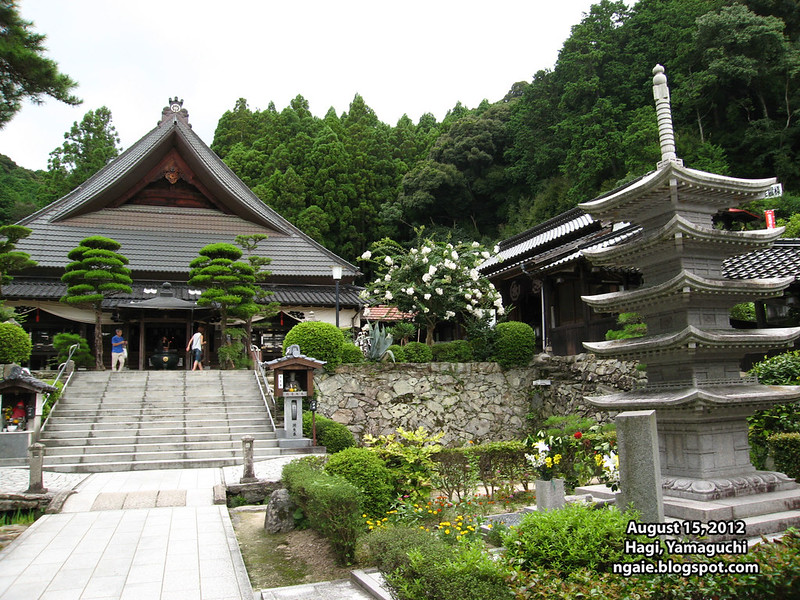
After that, we drove to the city centre since the Ruriko-ji Temple was not located in the city centre and parked the car in a pachinko parlour beside the Yamaguchi railway station.

The city centre of Yamaguchi was quite quiet and there was a lot of greenery which is something you don't see much in other Japanese cities.
The main shopping arcade.
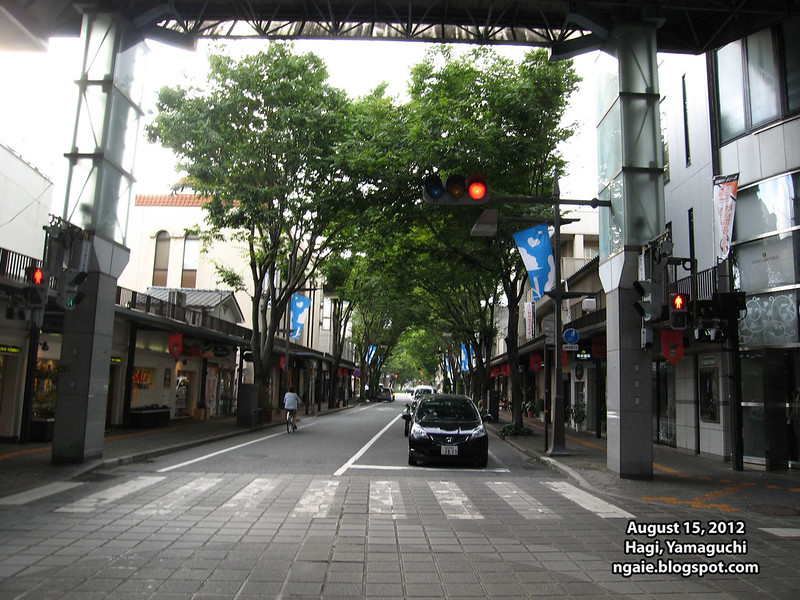
One of the other attractions of Yamaguchi was the Xavier Memorial Church which commemorates Francis Xavier's visit Yamaguchi city.
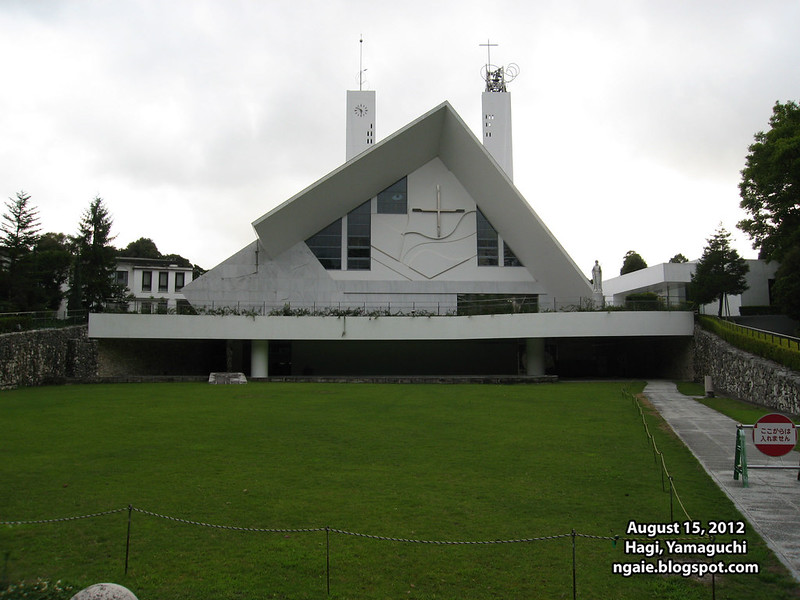
We ate dinner at Yamaguchi city before we left. When we inquired about what kind of dish Yamaguchi city was famous for, we were told that something called Bari-soba (バリそば) was a local special. Bari-soba is like a Japanized hybrid Chinese dish with a sauce consisting of cabbage, bamboo shoots, mushrooms and squid put on top of pan-fried thick noodles. We were recommended to go to a restaurant called Shunraiken (春来軒) which invented this dish.
I was quite disappointed at this "local special" that I did not even take any pictures so the following photos are not mine.
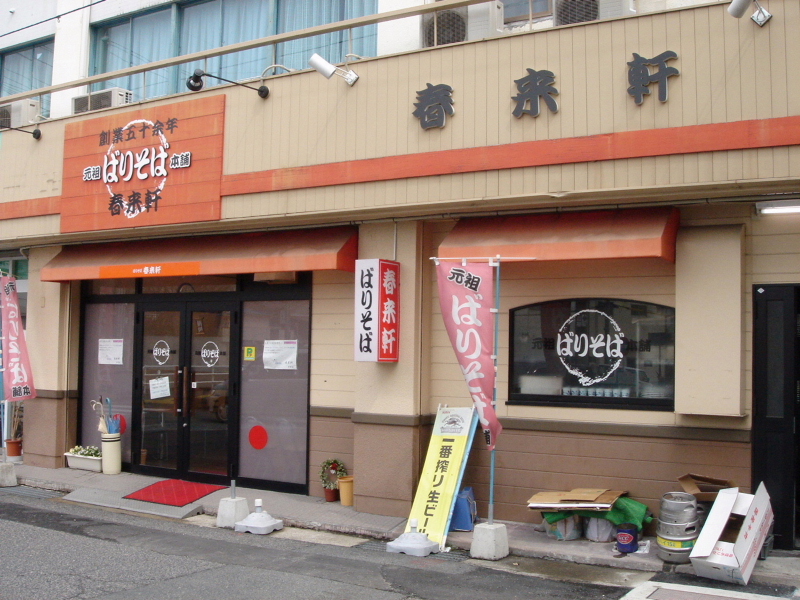
The actual Bari-soba dish that we ordered for 2 persons. I usually have no problems finishing food but for this dish, I had trouble trying to finish it because it just wasn't tasty. The sauce was too watery and overwhelmed the noodles, it seemed like you were drinking the sauce like soup! Also the ingredients they used for the sauce was quite tasteless like the cabbage and squid.
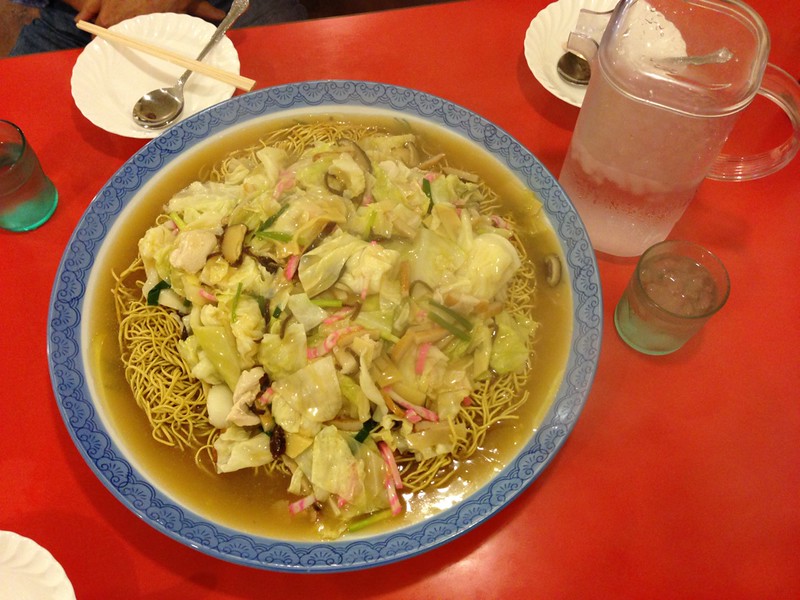

0 comments:
Post a Comment